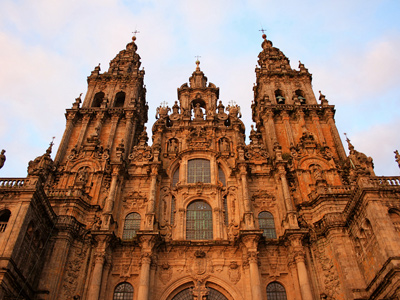
Catholicism - Pilgrimage
This GCSE RE Catholicism quiz focuses on pilgrimage. 'Pilgrimage' is a voluntary journey undertaken by an individual or group, to visit one or more places that are special within their system of belief. You may well be aware of how Muslims make their Hajj to Mecca (a formal obligation for them), or of references to the famous spiritual book 'Pilgrim's Progress' ~ written by the 17th-century British nonconformist [Protestant] John Bunyan while in jail for his own brand of belief ~ in which the Christian life itself is likened to a pilgrimage amid obstacles and challenges.
Pilgrims will typically have a deep urge to walk as close as they can in the footsteps, and within the formative landscape, of influential figures such as Jesus Himself, St Paul (with his church-founding voyages around the eastern Mediterranean) or other holy people; in a similar way to how others might wish to visit the sites of famous battles or the scenery which inspired great artists.
* He does, however, vividly remember an 'Alpha'-type course at a young people's holiday houseparty many years ago, where a talk about the Cross was given by a colleague with interests in archaeology. While he spoke, a small metal artefact was passed around for us to handle and consider: this was a 'standard Roman army six-inch [15cm] nail' that had recently been unearthed from the site of an abandoned Roman fort. Unremarkable in itself, you might think ... except that if this was a typical all-purpose large wood-nail from that particular, proto-global organisation, it brought one an alarming step closer to appreciating what would have been hammered into the beams at a typical crucifixion, let alone that most infamous one of all on 'Good Friday'
Ready for more?
not all...
quizzers. Try to win a coveted spot on our Hall of Fame Page.







